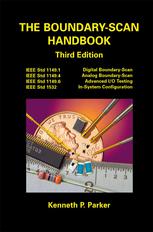

Most ebook files are in PDF format, so you can easily read them using various software such as Foxit Reader or directly on the Google Chrome browser.
Some ebook files are released by publishers in other formats such as .awz, .mobi, .epub, .fb2, etc. You may need to install specific software to read these formats on mobile/PC, such as Calibre.
Please read the tutorial at this link: https://ebookbell.com/faq
We offer FREE conversion to the popular formats you request; however, this may take some time. Therefore, right after payment, please email us, and we will try to provide the service as quickly as possible.
For some exceptional file formats or broken links (if any), please refrain from opening any disputes. Instead, email us first, and we will try to assist within a maximum of 6 hours.
EbookBell Team

4.0
66 reviewsIn February of 1990, the balloting process for the IEEE proposed standard P1149.1 was completed creating IEEE Std 1149.1-1990. Later that summer, in record time, the standard won ratification as an ANSI standard as well. This completed over six years of intensive cooperative effort by a diverse group of people who share a vision on solving some of the severe testing problems that exist now and are steadily getting worse. Early in this process, someone asked me if 1 thought that the P1l49.l effort would ever bear fruit. 1 responded somewhat glibly that "it was anyone's guess". Well, it wasn't anyone's guess, but rather the faith of a few individuals in the proposition that many testing problems could be solved if a multifaceted industry could agree on a standard for all to follow. Four of these individuals stand out; they are Harry Bleeker, Colin Maunder, Rodham Tulloss, and Lee Whetsel. In that I am convinced that the 1149.1 standard is the most significant testing development in the last 20 years, I personally feel a debt of gratitude to them and all the people who labored on the various Working Groups in its creation.